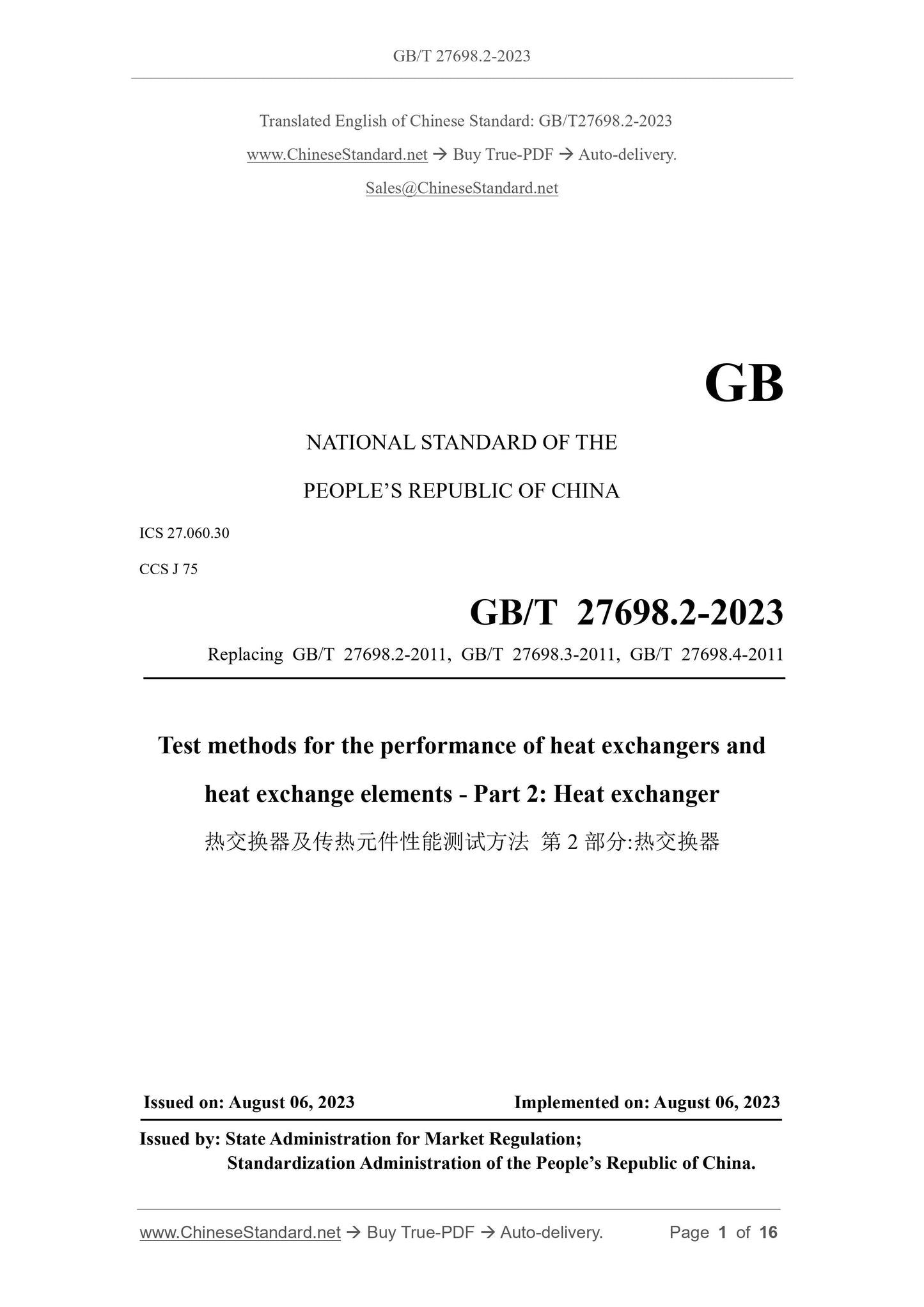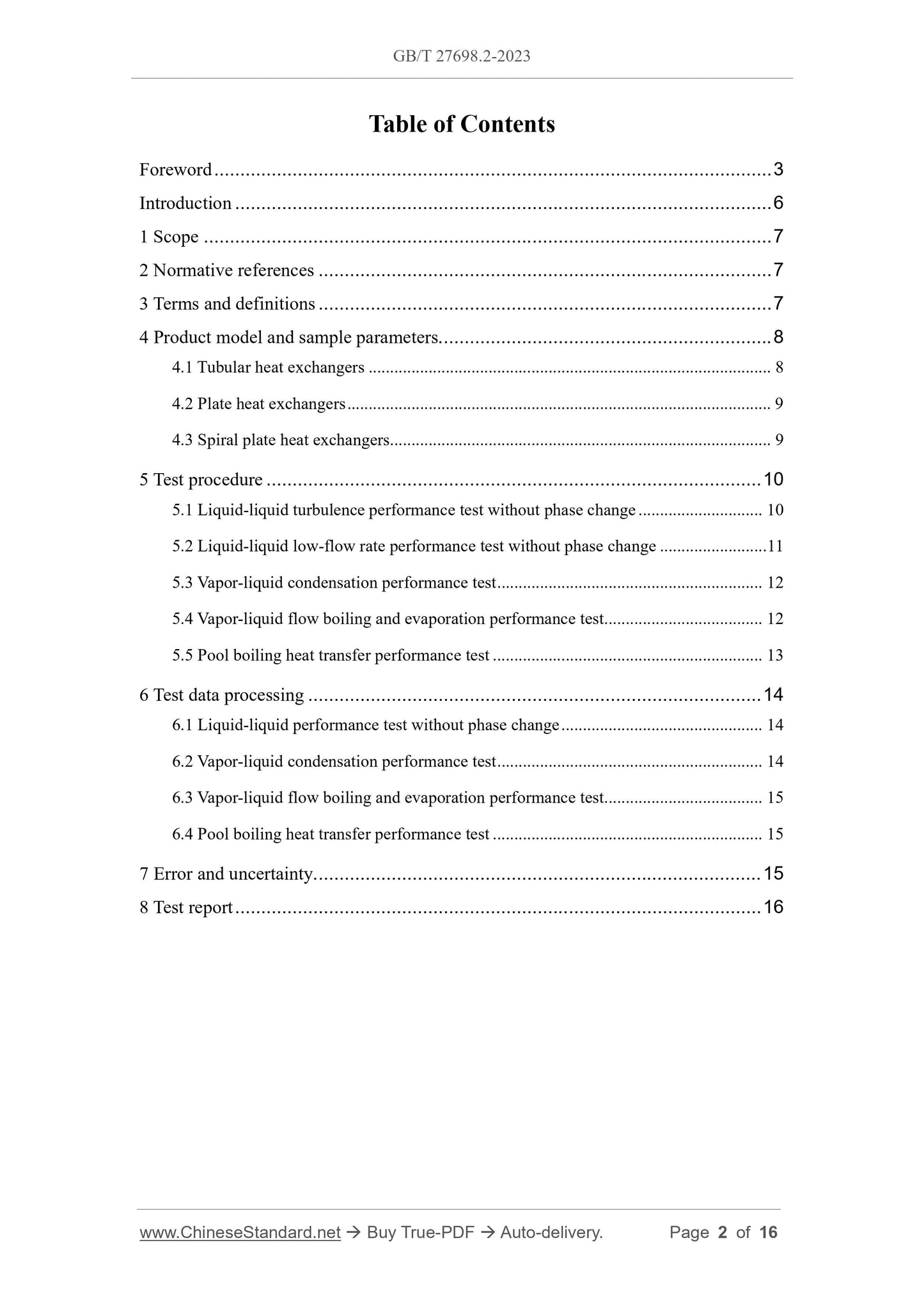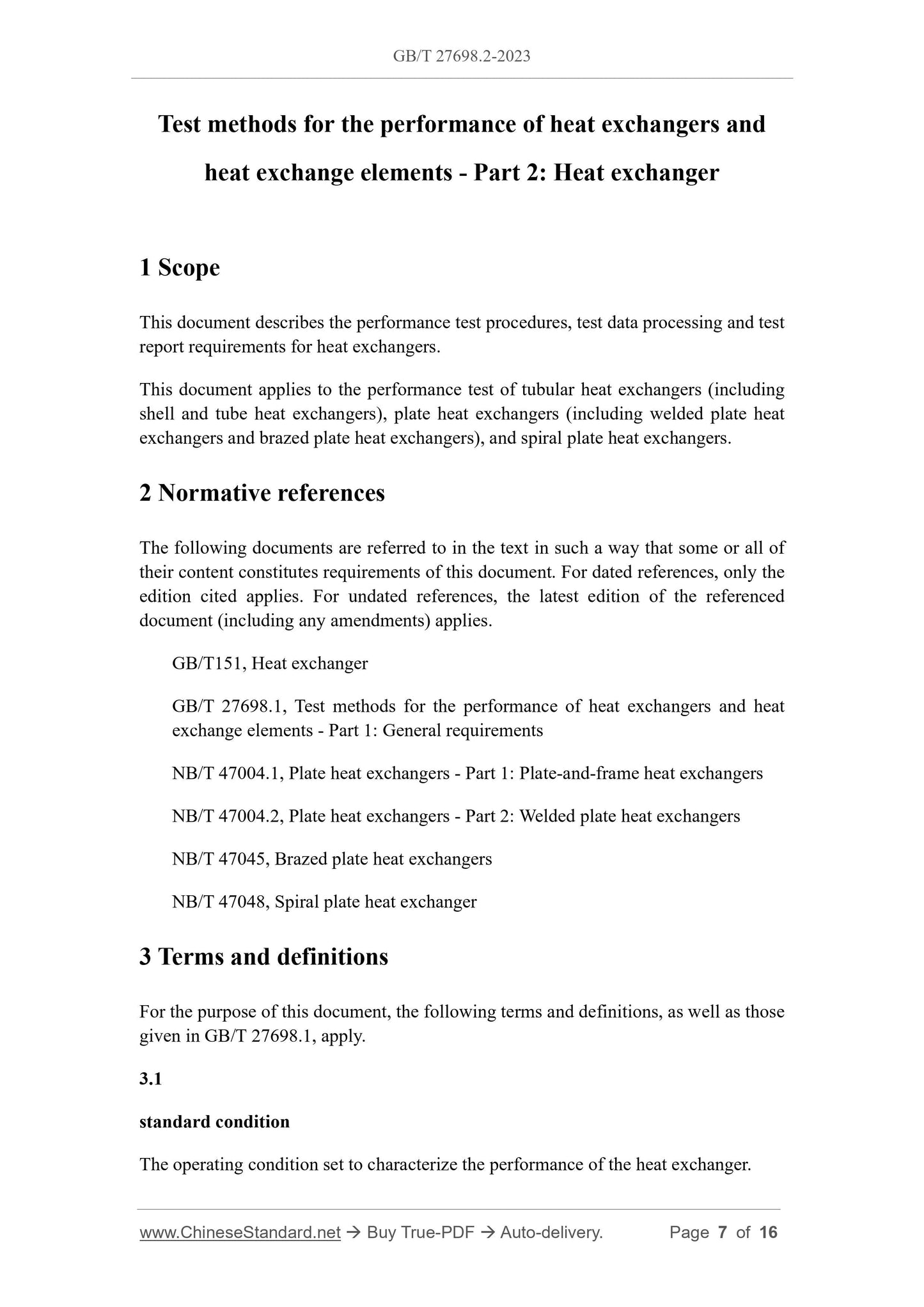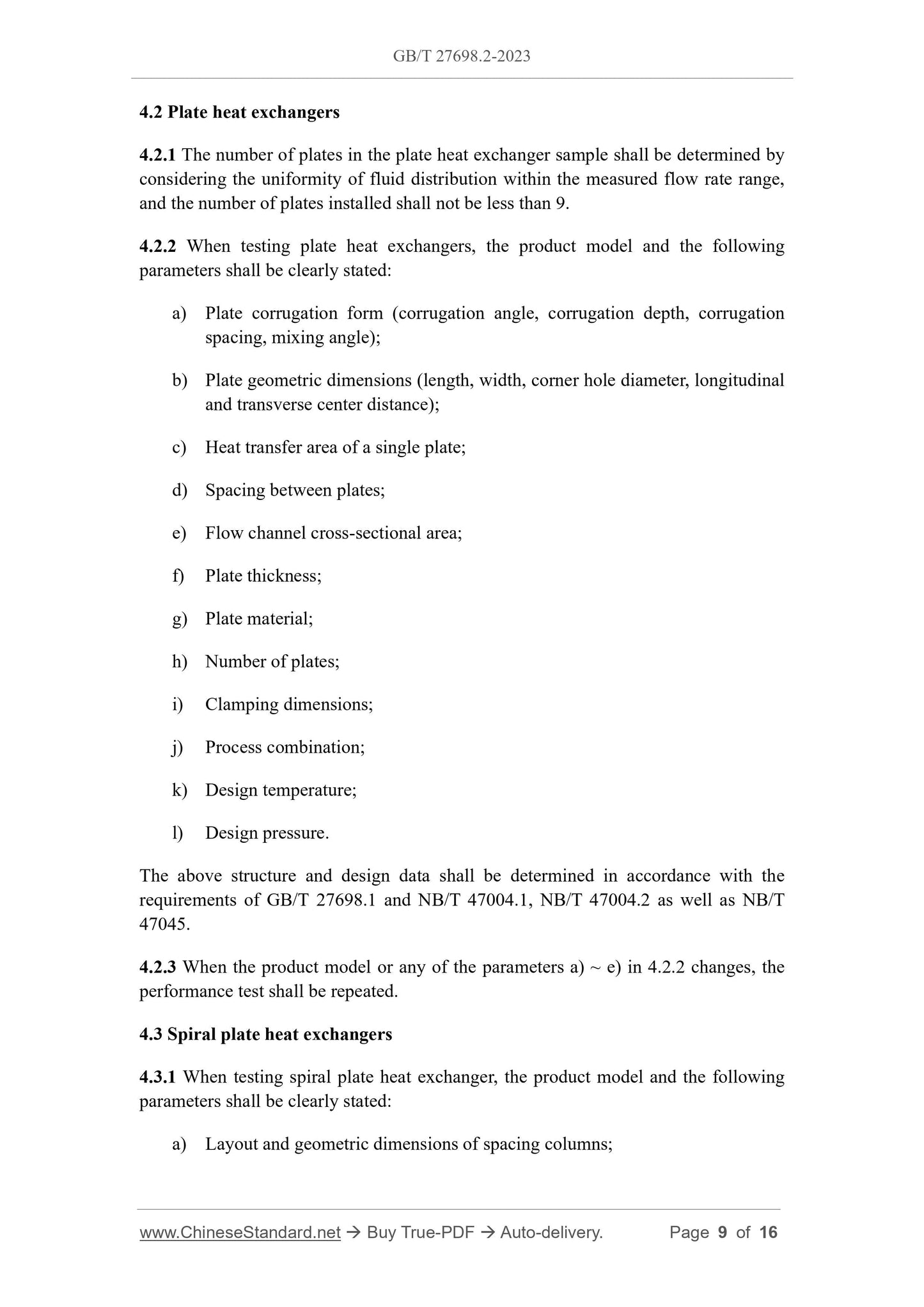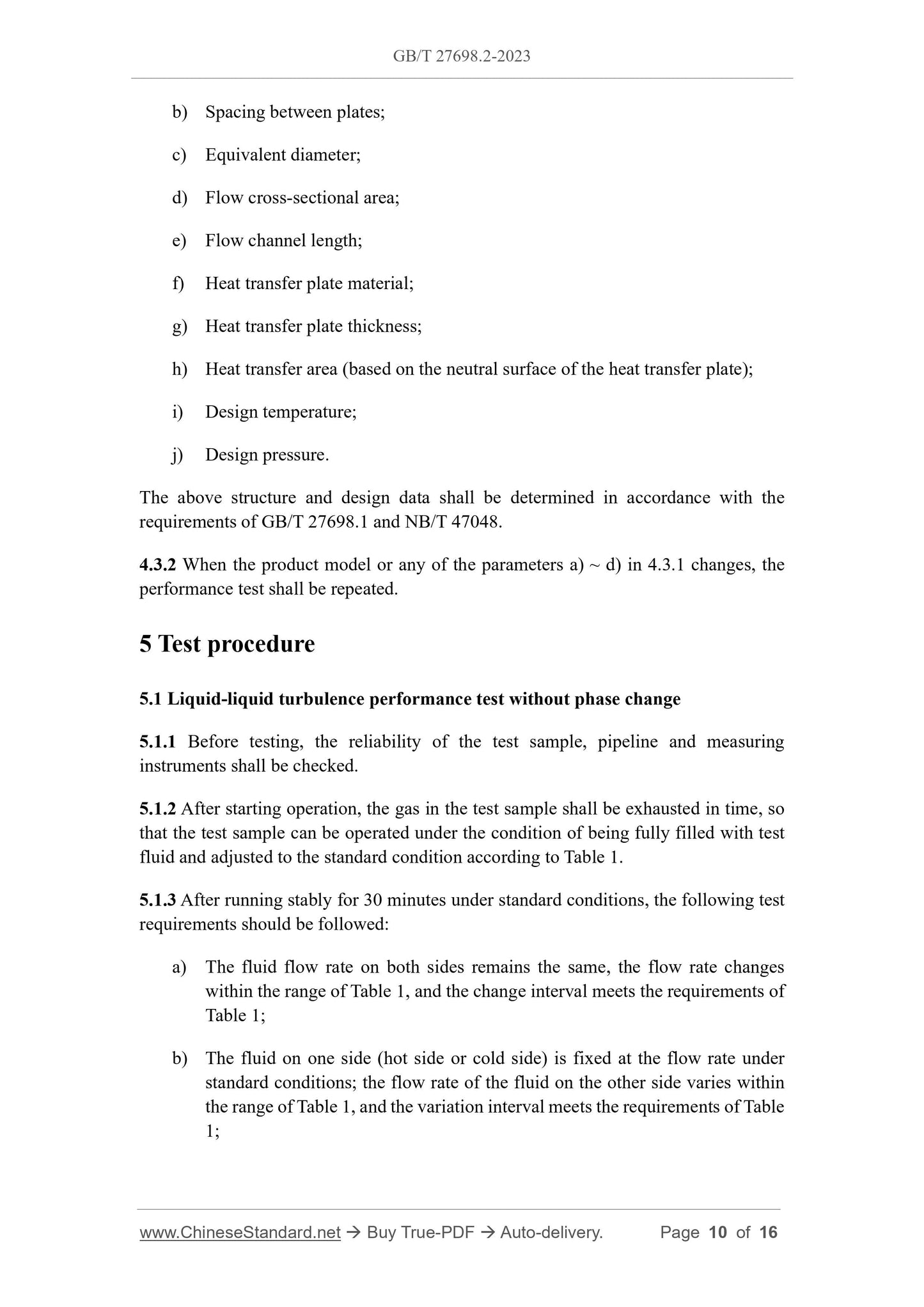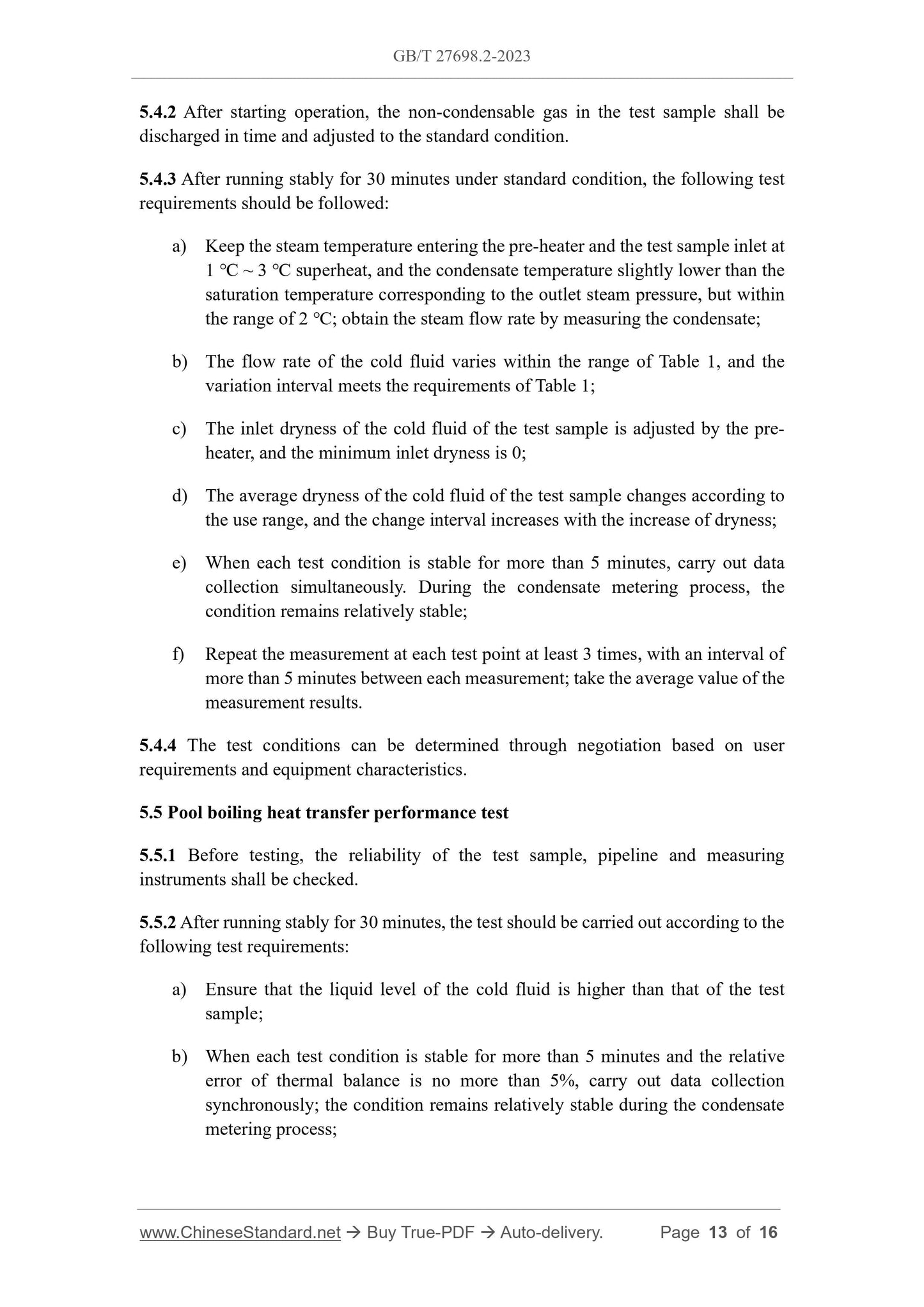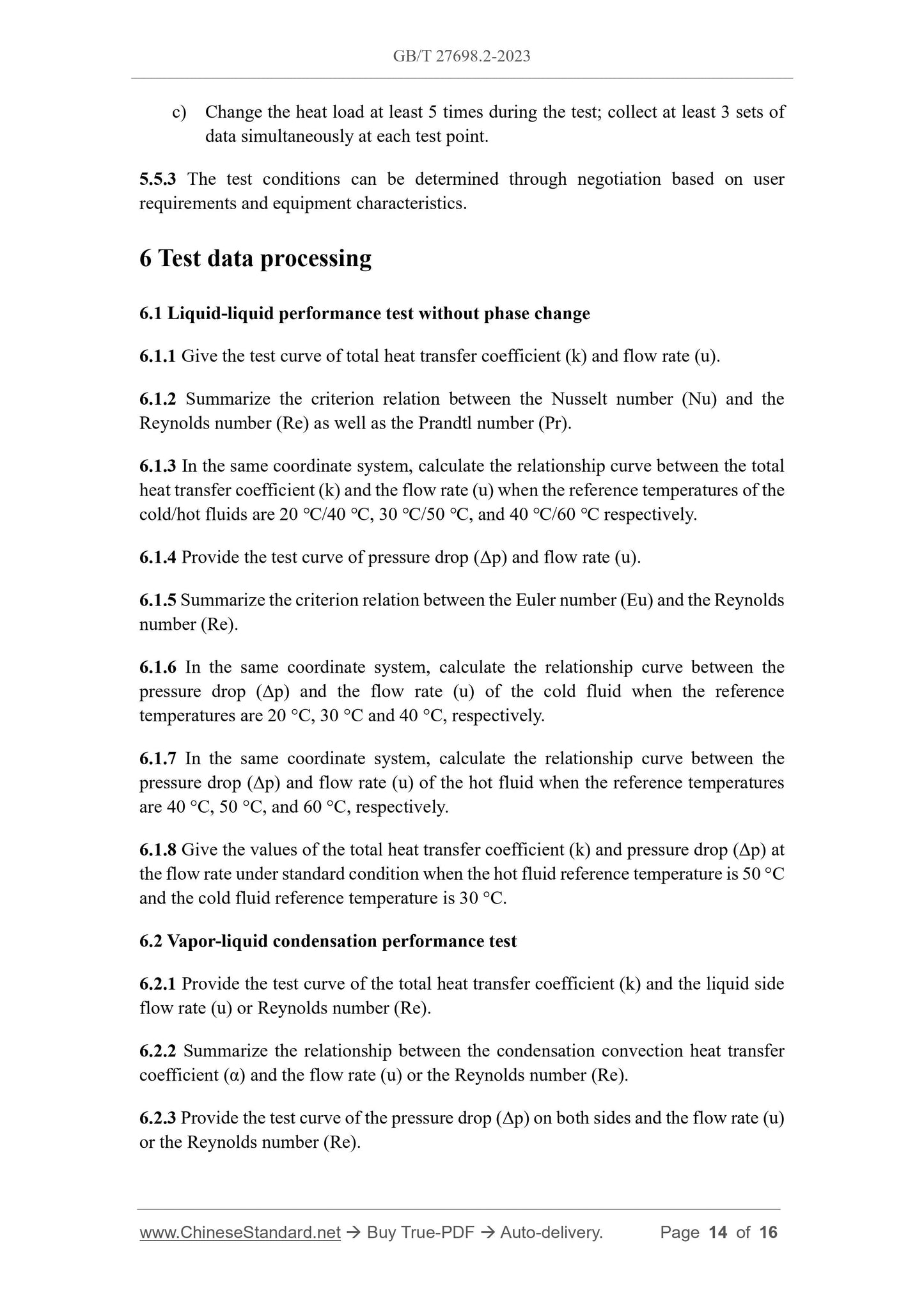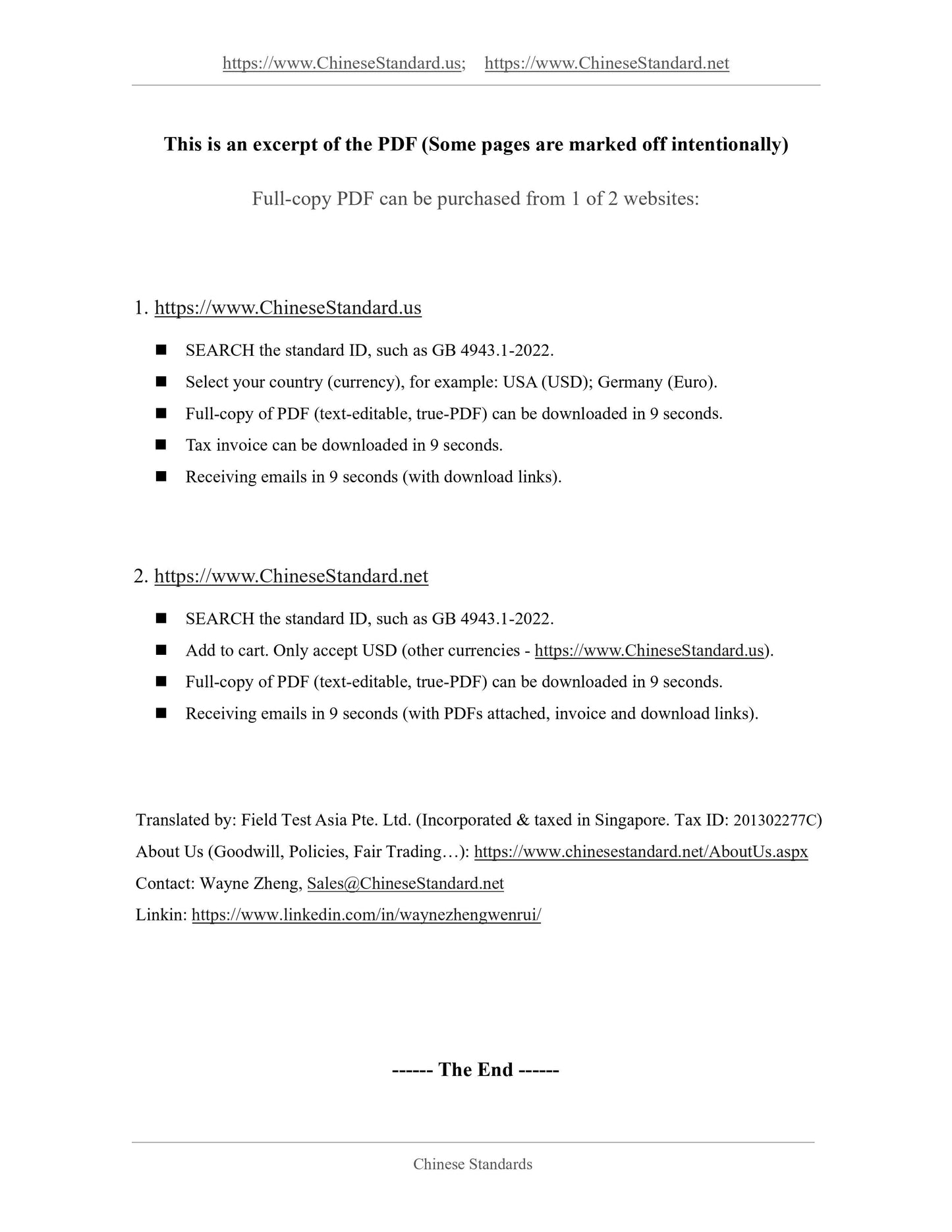1
/
of
8
www.ChineseStandard.us -- Field Test Asia Pte. Ltd.
GB/T 27698.2-2023 English PDF (GB/T27698.2-2023)
GB/T 27698.2-2023 English PDF (GB/T27698.2-2023)
Regular price
$230.00
Regular price
Sale price
$230.00
Unit price
/
per
Shipping calculated at checkout.
Couldn't load pickup availability
GB/T 27698.2-2023: Test methods for the performance of heat exchangers and heat exchange elements - Part 2: Heat exchangers
Delivery: 9 seconds. Download (and Email) true-PDF + Invoice.Get Quotation: Click GB/T 27698.2-2023 (Self-service in 1-minute)
Newer / historical versions: GB/T 27698.2-2023
Preview True-PDF
Scope
This document describes the performance test procedures, test data processing and testreport requirements for heat exchangers.
This document applies to the performance test of tubular heat exchangers (including
shell and tube heat exchangers), plate heat exchangers (including welded plate heat
exchangers and brazed plate heat exchangers), and spiral plate heat exchangers.
Basic Data
| Standard ID | GB/T 27698.2-2023 (GB/T27698.2-2023) |
| Description (Translated English) | Test methods for the performance of heat exchangers and heat exchange elements - Part 2: Heat exchangers |
| Sector / Industry | National Standard (Recommended) |
| Classification of Chinese Standard | J75 |
| Classification of International Standard | 27.060.30 |
| Word Count Estimation | 14,179 |
| Date of Issue | 2023-08-06 |
| Date of Implementation | 2023-08-06 |
| Older Standard (superseded by this standard) | GB/T 27698.2-2011,GB/T 27698.3-2011,GB/T 27698.4-2011 |
| Issuing agency(ies) | State Administration for Market Regulation, China National Standardization Administration |
Share
